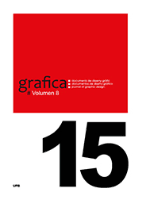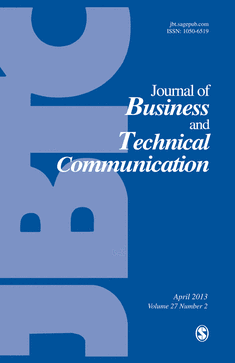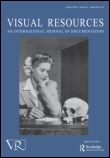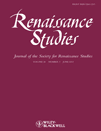
Grafica-Journal of Graphic Design
Scope & Guideline
Your Gateway to Cutting-Edge Design Research
Introduction
Aims and Scopes
- Interdisciplinary Exploration:
The journal emphasizes the integration of graphic design with various fields such as art, education, and cultural studies, reflecting a holistic understanding of design's role in society. - Educational Innovation:
It focuses on methodologies and practices in graphic design education, fostering discussions about teaching strategies, curricula, and the development of creative skills among students. - Cultural Identity and Representation:
The journal investigates how graphic design contributes to the representation of cultural identities, visual communication, and social narratives, often through case studies and applied research. - Technological Impact on Design:
There is a consistent emphasis on how emerging technologies influence graphic design practices, including digital media, infographics, and design cognition. - Research and Development in Design:
The journal supports applied research in design, encouraging studies that bridge theory and practice, including case studies, prototyping, and design methodologies. - Visual Communication Strategies:
Analysis of visual communication strategies in various contexts, including advertising, public art, and identity design, is a core area of focus.
Trending and Emerging
- Sustainability and Ethical Design:
There is a growing emphasis on sustainable practices and ethical considerations within graphic design, reflecting a global trend towards environmental responsibility and social awareness. - Digital and Interactive Media:
Recent papers show an increasing focus on digital design, including interactive media and online platforms, indicating a shift towards understanding design in digital contexts. - Cultural and Social Commentary:
The journal is seeing more studies that address graphic design as a tool for social commentary and cultural representation, highlighting the role of designers in societal issues. - Design Cognition and Neuroscience:
Emerging research on design cognition and the psychological aspects of design, including how people perceive and interact with visual information, is becoming more prominent. - Inclusive and Accessible Design:
There is an increased focus on inclusivity and accessibility in graphic design, with discussions on how design can serve diverse populations and promote equitable access to information.
Declining or Waning
- Traditional Print Media:
There is a noticeable decline in the focus on traditional print media, such as newspapers and magazines, as the journal increasingly addresses digital and interactive design contexts. - Historical Analysis of Design Practices:
The journal has seen a decrease in papers dedicated solely to historical analyses of graphic design, suggesting a shift towards contemporary practices and future-oriented discussions. - Niche Aesthetic Movements:
Discussions around specific aesthetic movements or styles in graphic design seem to be waning, possibly as the field becomes more integrated and less defined by distinct styles. - Graphic Design for Specific Demographics:
While previously there was more focus on graphic design targeted at specific demographics, this seems to be less prevalent, indicating a broader approach to topics that encompass wider audiences.
Similar Journals

JOURNAL OF BUSINESS AND TECHNICAL COMMUNICATION
Elevating Communication Practices in BusinessJOURNAL OF BUSINESS AND TECHNICAL COMMUNICATION is a premier peer-reviewed journal published by SAGE PUBLICATIONS INC, renowned for its rigorous approach to exploring the intersection of communication practices within the realms of business and technology. Established in 1987, this journal stands at the forefront of its field with an impressive impact factor, consistently ranked in the Q1 quartile across multiple categories including Business and International Management, Communication, as well as Business, Management and Accounting. With an emphasis on innovative research and practical applications, it serves as an invaluable resource for researchers, professionals, and students aiming to enhance their understanding of effective communication strategies in a rapidly evolving business landscape. The journal does not currently offer open access, ensuring a curated and high-quality readership. Located in Thousand Oaks, California, the JOURNAL OF BUSINESS AND TECHNICAL COMMUNICATION continues to shape scholarly discourse and influence best practices in global communication.

Rita-Revista Indexada de Textos Academicos
Empowering Academic Voices in Urban EnvironmentsRita-Revista Indexada de Textos Academicos, with ISSN 2340-9711 and E-ISSN 2386-7027, is a pioneering open-access journal published by Cancha Editorial Spa since 2014, based in Chile. This journal serves as a vital platform for researchers, professionals, and students in the fields of Architecture, Urban Studies, and the Visual Arts and Performing Arts. Despite its Q4 ranking in 2023 across these disciplines, Rita seeks to elevate academic discourse and foster innovative perspectives by encouraging contributions that deepen the understanding of visual and spatial dynamics within urban environments. The journal's commitment to open access ensures that knowledge is widely disseminated and accessible to a global audience, fostering inclusivity in research and scholarly communication. With its coverage spanning from 2014 to 2024, Rita stands as a beacon for emerging scholarship and ongoing dialogue in the arts and humanities.

ARCHITECTURAL RECORD
Illuminating Architectural Insights and PracticesARCHITECTURAL RECORD, published by McGraw Hill Inc, stands as a vital resource in the field of architecture and design, offering insightful perspectives and critical analyses that cater to architects, designers, and academia alike. With an ISSN of 0003-858X, this prestigious journal has been a cornerstone for the architectural community, providing a blend of contemporary practices and theoretical frameworks since its inception. Although it is not currently available through Open Access, its rich content contributes to the ongoing dialogue in both the Visual Arts and Performing Arts, as well as Engineering and Architecture disciplines. The journal's historical impact can be seen through its wide readership and influence in shaping architectural discourse, making it a highly regarded publication for professionals and students in the field. As a beacon of innovative practices, ARCHITECTURAL RECORD continues to inspire and educate, even despite its coverage discontinuation in Scopus since 2018.

Visual Resources
Advancing Knowledge in Visual Culture and Museum PracticesVisual Resources, an esteemed journal published by Routledge Journals, Taylor & Francis Ltd, serves as a vital platform for scholarly research in the fields of Museology and Visual Arts and Performing Arts. With an ISSN of 0197-3762 and an E-ISSN of 1477-2809, this journal has navigated the academic landscape since its inception in 1980, continuing to amplify critical dialogues up to 2024. Positioning itself within category quartiles as Q3 for both museology and visual arts, the journal ranks at #302/667 in the Visual Arts and Performing Arts category and #41/83 in Museology according to Scopus, reflecting a significant yet competitive standing. Although not designated as Open Access, the publication remains accessible through institutional subscriptions, catering to a diverse audience of researchers, professionals, and students. By disseminating pioneering research and innovative methodologies pertinent to visual culture and museum practices, Visual Resources plays an indispensable role in advancing knowledge in its disciplines and connects academia with contemporary practice.

International Circular of Graphic Education and Research
Pioneering knowledge dissemination in graphic education.Welcome to the International Circular of Graphic Education and Research, a prestigious journal dedicated to advancing the field of graphic arts technology and management. Published by the INT CIRCLE EDUCATIONAL INST GRAPHIC ARTS TECHNOLOGY & MANAGEMENT in Stuttgart, Germany, this journal serves as a vital resource for researchers, professionals, and students interested in the latest developments and methodologies in graphic education. With a focus on fostering innovative research and promoting artistic practices, it encourages submissions related to educational techniques, technological advancements, and modern management practices within the graphic arts domain. Although the journal currently operates under a traditional access model, it emphasizes the importance of disseminating knowledge to bolster academic collaboration and professional development. The International Circular of Graphic Education and Research is essential for anyone looking to remain at the forefront of graphic education and its evolving landscape.

Renaissance Studies
Connecting Past Innovations with Present PerspectivesRenaissance Studies, published by Wiley, stands as a vital academic platform within the disciplines of Cultural Studies, History, Literature and Literary Theory, Religious Studies, and Visual Arts and Performing Arts. With an impressive history of publication spanning from 1987 to 2024, this journal is recognized in 2023 metrics as a Q2 journal in four categories and Q1 in Literature and Literary Theory, reflecting its substantial impact in promoting interdisciplinary dialogue and research. The journal's robust Scopus rankings further underscore its relevance, including a position in the 83rd percentile in Literature and Literary Theory. Although not an open-access journal, it provides readers and contributors with access to curated, high-quality scholarship that explores the complexities of the Renaissance and its enduring influence on contemporary thought and culture. Researchers, professionals, and students alike will find Renaissance Studies invaluable in fostering discussions that bridge historical context with modern inquiry.

Imago-Revista de Emblematica y Cultura Visual
Cultivating Understanding of Cultural VisualsImago-Revista de Emblematica y Cultura Visual, published by Publicaciones Univ Valencia, serves as a vital platform for scholarship in the multidisciplinary fields of Visual Arts, Communication, and Linguistics. This Spanish journal has been recognized for its contributions to academic discourse, showcasing works that delve into the complexities of visual culture, emblems, and their interpretations within contemporary society. With an impressive ranking in Scopus, placing it in the Q2 category for Visual Arts and Performing Arts, and Q3 for Linguistics and Language in 2023, it stands out among its peers as a reputable source for researchers and scholars. Although it operates under a non-open access model, its content remains instrumental in advancing the understanding of visual narratives and their cultural implications. Located in Valencia, Spain, Imago not only reflects the academic rigor of its contributors but also fosters collaboration and exchange of ideas, making it an essential resource for professionals, students, and academics alike.

EGA-Revista de Expresion Grafica Arquitectonica
Empowering Scholars to Shape the Future of Architectural ArtistryEGA-Revista de Expresion Grafica Arquitectonica is a premier academic journal published by UNIV POLITECNICA VALENCIA, EDITORIAL UPV, specializing in the fields of architecture and visual arts. This Open Access journal has been a vital resource for scholars since its inception in 2003, facilitating the dissemination of innovative research and practice in these dynamic disciplines. With an exemplary Q2 ranking in Architecture and a stellar Q1 position in Visual Arts and Performing Arts for 2023, EGA exemplifies high standards of scholarly excellence, making it a critical platform for interdisciplinary dialogue. Its impact is further underscored by its Scopus rankings, placing it at the 67th percentile in Visual Arts and Performing Arts and the 41st percentile in Architecture, reflecting its growing influence within the academic community. Designed for researchers, professionals, and students alike, EGA aims to foster insightful exchange and knowledge advancement, thereby enhancing the future of architecture and artistic expression.

International Journal of Design
Connecting Theory and Practice in DesignThe International Journal of Design, published by National Taiwan University of Science and Technology, is a premier open-access journal that has been contributing to the field since 2007. With an ISSN of 1991-3761 and E-ISSN of 1994-036X, this journal focuses on the interdisciplinary nature of design and its applications across various domains including Computer Graphics, Industrial and Manufacturing Engineering, as well as Visual Arts. The journal has consistently achieved high rankings, including being placed in the top quartile (Q1) for several categories in 2023, reflecting its significance in academia and its impact on contemporary design research. Offering wide-ranging access options, the International Journal of Design serves as a valuable resource for researchers, professionals, and students looking to explore innovative design practices and theories. With its scope spanning both artistic and industrial applications, this journal is dedicated to fostering advancements in design and providing a platform for scholarly discussions that bridge the gap between theory and practice.

Bulletin KNOB
Exploring Cultural Narratives Through TimeBulletin KNOB, published by the KONINKLIJKE NEDERLANDSE OUDHEIDKUNDIGE BOND-KNOB, is a reputable Open Access journal that has been disseminating knowledge since 1899, with a continued commitment to making research accessible to all. Based in the Netherlands, this journal provides a platform for scholarly articles that span the fields of Conservation, History, and the Visual Arts and Performing Arts. With its 2023 Scopus rankings placing it in the top quartiles within its category, Bulletin KNOB is recognized for its significant contribution to the advancement of these disciplines. Researchers, professionals, and students alike are encouraged to engage with the journal's diverse content that bridges historical narratives with contemporary practices, fostering a deeper understanding of cultural heritage. The journal’s commitment to excellence is further reflected in its Q3 and Q4 quartile rankings, making it an essential resource for anyone dedicated to the study of the arts and humanities.